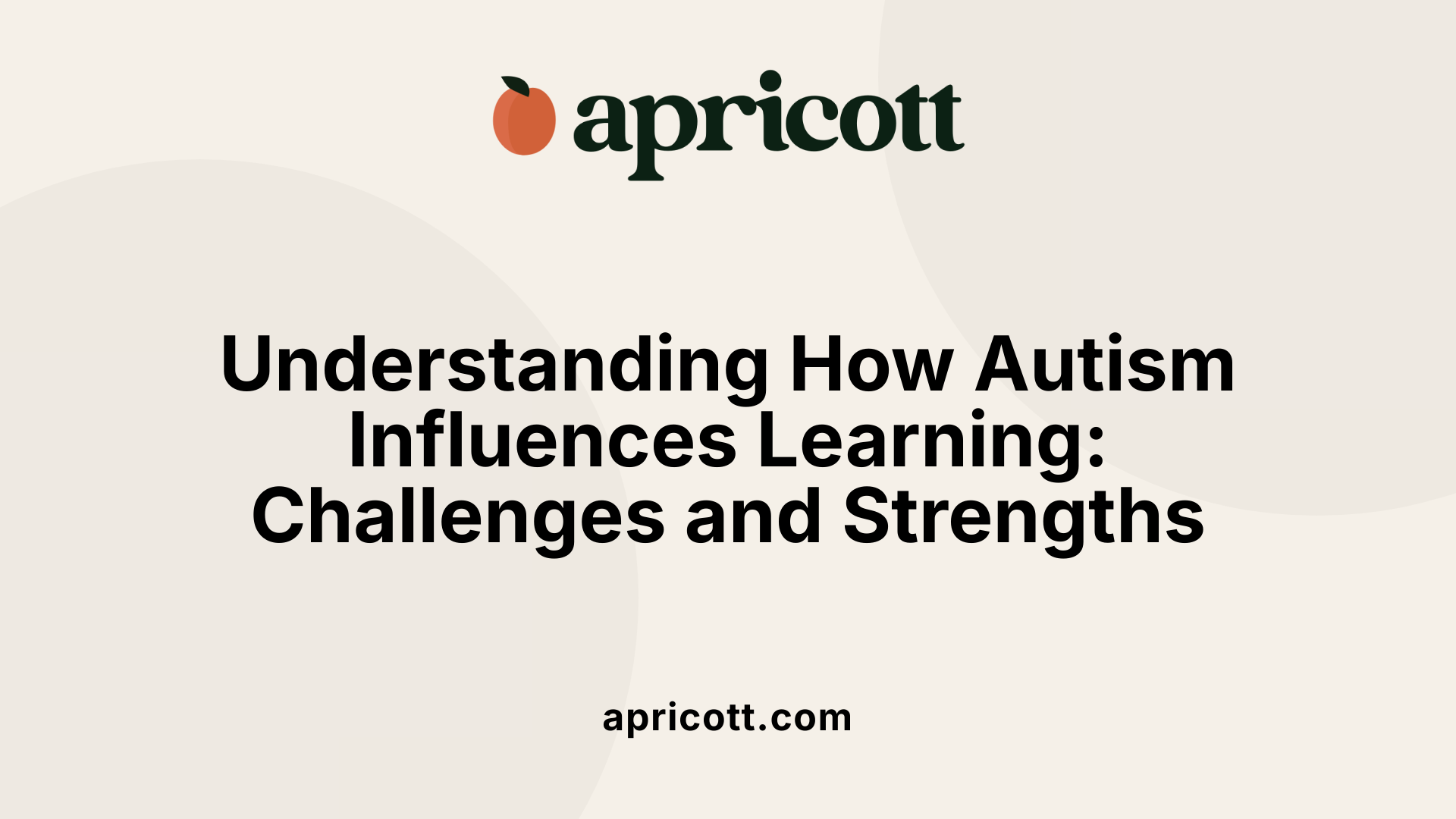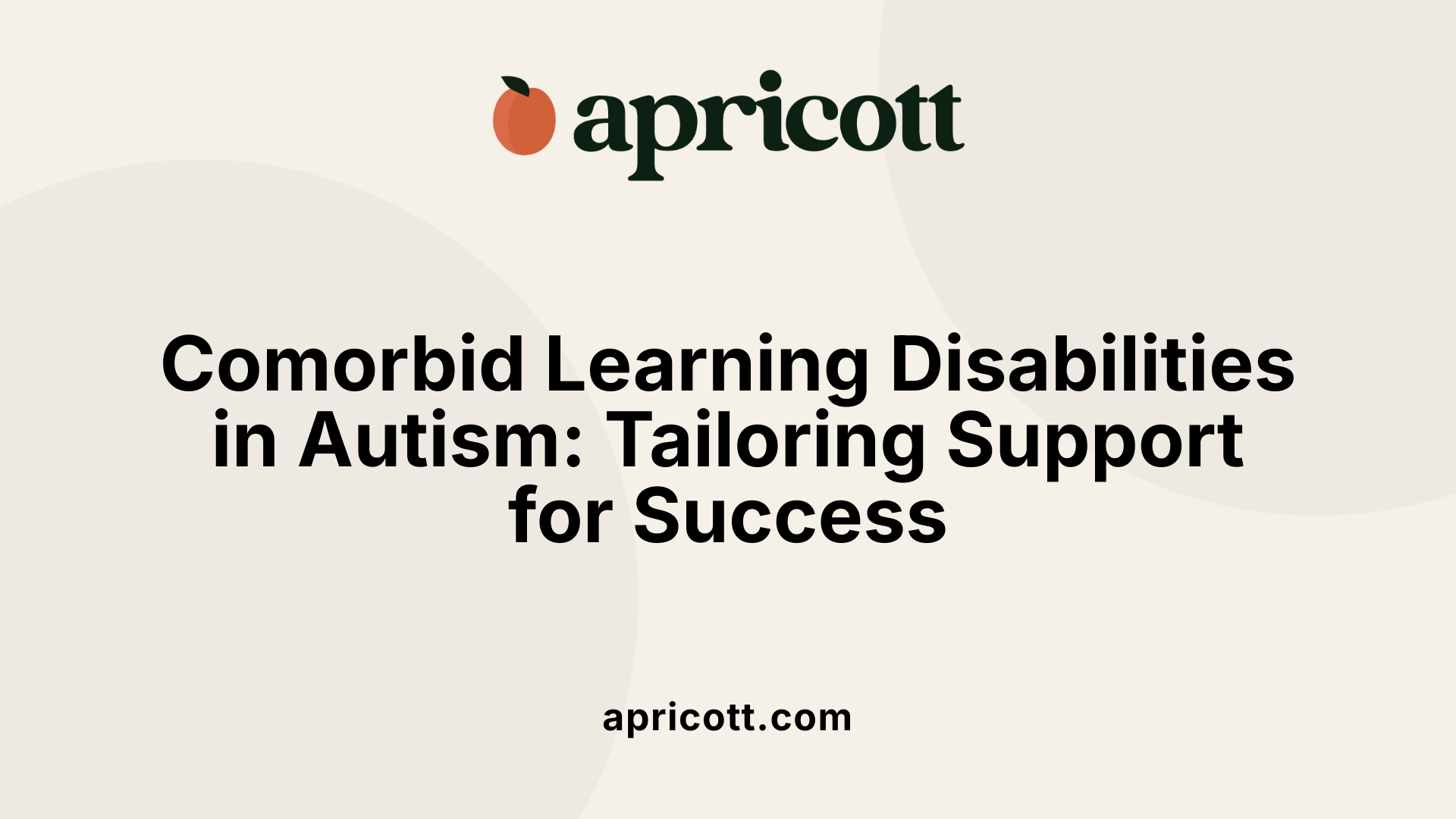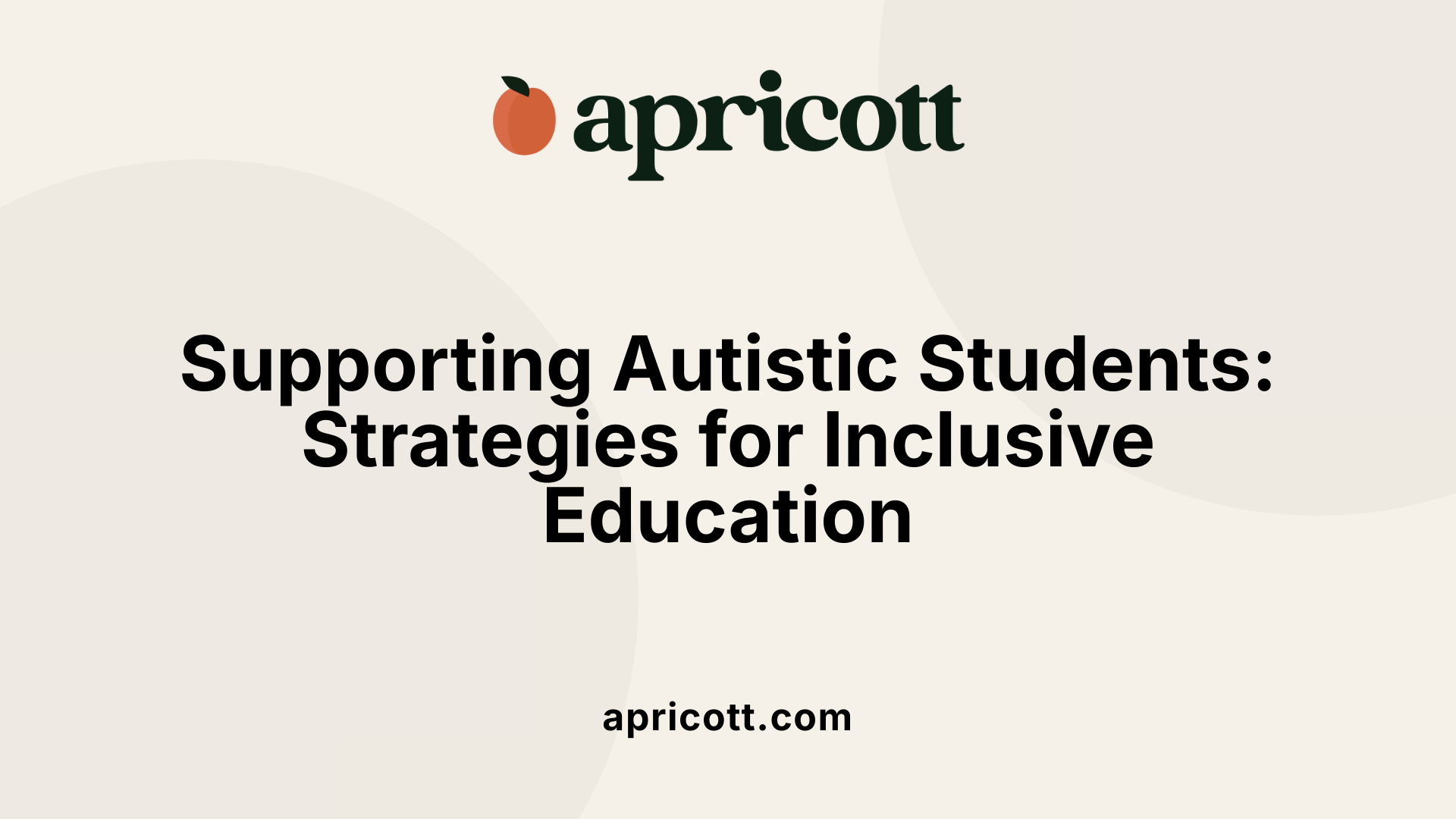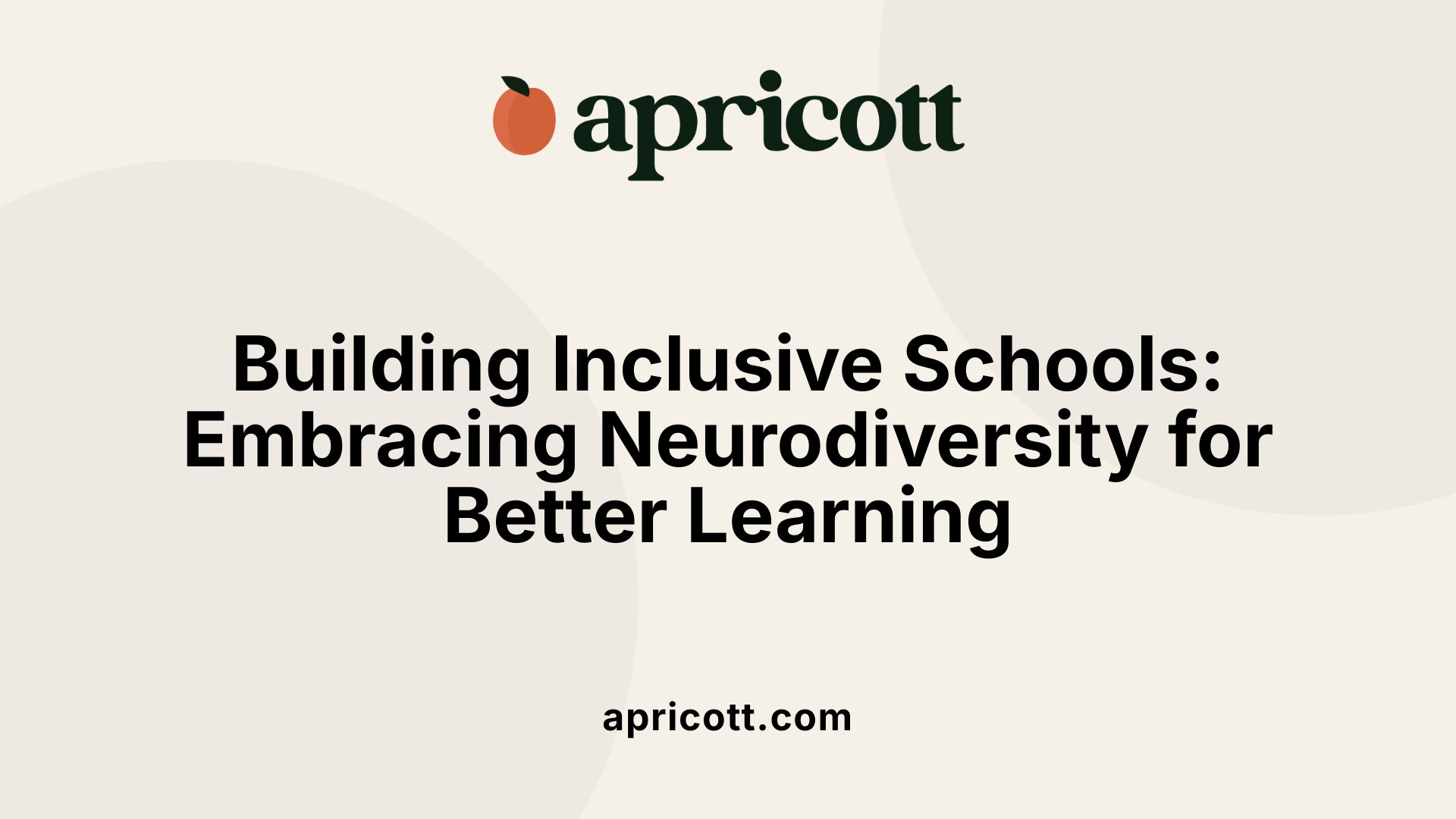August 18, 2025
Understanding Autism's Impact on Educational Journeys
Autism Spectrum Disorder (ASD) is a complex neurodevelopmental condition that influences how individuals perceive, process, and respond to their environment. Its impact on learning is multifaceted, affecting cognitive abilities, communication, sensory processing, and social interaction. Recognizing these effects is essential for developing effective educational strategies, fostering inclusive environments, and supporting autistic learners in reaching their full potential. This article delves into the various ways autism can affect learning and offers insights into supportive practices that make education more accessible and rewarding for autistic students.

Autism influences the learning process in several significant ways. Children on the spectrum often face impairments in social skills, which can hinder cooperation with teachers and peers, affecting group activities and social learning.
Additionally, many autistic individuals experience difficulty processing information quickly or accurately. This can mean delays in understanding new concepts, trouble following multi-step instructions, or challenges with problem-solving tasks.
Sensory processing differences are also prominent. Autistic children might be hypersensitive, becoming overwhelmed by loud noises, bright lights, or tactile stimuli, which can lead to distraction or meltdowns. Conversely, some may be hyposensitive, missing sensory cues that are important for learning. Sensory overload can prevent focus and participation in classroom activities.
Communication challenges are prevalent. Delays in language development and difficulties in understanding and expressing speech can make it hard for students to follow instructions, ask questions, or share their thoughts effectively. Some may rely on non-verbal communication methods, adding to the complexity.
Higher-than-usual levels of anxiety are common among autistic students. Elevated anxiety can interfere with concentration, motivation, and overall classroom engagement, making it more difficult to learn and adapt to new environments.
Supporting students with autism requires tailored strategies. Creating structured and predictable routines helps reduce anxiety by providing a sense of security. Visual supports such as schedules, picture cues, and social stories make expectations clear and accessible.
Incorporating sensory-friendly spaces and accommodations is also beneficial. Allowing the use of noise-canceling headphones, fidget toys, or designated calm-down areas can help students manage sensory sensitivities.
Promoting social skills and peer interactions through buddy systems, small group activities, and explicit coaching fosters inclusion. Clear, concrete language and visual aids enhance comprehension, especially for students with language delays.
Collaborating with families and specialists ensures individualized support tailored to each child's needs. Ongoing teacher training in autism-specific strategies helps maintain effective teaching practices. Together, these measures create inclusive learning environments where autistic students can thrive academically and socially.

Many individuals on the autism spectrum experience various learning difficulties that can influence their educational abilities and daily life. A significant proportion, around 60-70%, also have a learning disability such as dyslexia or dyspraxia. These conditions can affect reading, writing, and spelling skills, making it challenging for autistic children to acquire literacy effectively.
In addition to language-related issues, executive functioning challenges often emerge. These include difficulties with planning, organizing tasks, maintaining working memory, and sustaining attention. Such challenges can hinder completing academic assignments or managing daily routines efficiently.
Autistic individuals may encounter co-occurring medical and psychological conditions. Attention Deficit Hyperactivity Disorder (ADHD) is common and can compound learning difficulties, often necessitating medication or behavioral strategies to improve focus. Anxiety, depression, and obsessive-compulsive disorder (OCD) are also prevalent, further impacting learning processes and emotional health.
Motor skill problems and physical health issues like joint hypermobility or gastrointestinal distress might be present, contributing to overall discomfort and distractions that interfere with learning. Considering this wide range of difficulties, personalized educational plans help support individual needs.
Autism itself is not a learning disability. It is a neurodevelopmental condition characterized by differences in brain development affecting social interaction, communication, and sensory processing. Many autistic people are capable of learning new skills and knowledge, especially when instruction is tailored to their unique learning styles.
However, the presence of co-occurring learning disabilities can influence how effectively an autistic individual learns. These disabilities can make it harder to understand complex ideas, retain new information, or communicate clearly. The severity of these learning challenges varies widely—some may need only minimal adjustments, while others might require intensive support.
Autistic learners often benefit from specialized teaching methods. For example, many prefer visual learning or structured routines, and supports like multisensory approaches can significantly boost their learning potential. With appropriate accommodations, autistic individuals can develop skills and thrive academically and socially.
Children and adults with autism often face hurdles when trying to focus on studying. Their attentional difficulties can be linked to executive function deficits, which include challenges with planning, organization, and working memory. These issues can make completing homework or understanding lessons more complex. Additionally, many autistic individuals experience reduced concentration, especially when a task is outside their specific interests or involves long periods of sustained mental effort.
Sensory processing differences are common among autistic people and can significantly impact their learning experience. Hypersensitivity to sounds, lights, textures, and smells can cause discomfort, distraction, and even sensory overload, leading to meltdowns or withdrawal from learning activities.
On the other hand, hyposensitivity, where individuals are less sensitive to stimuli, might make them less aware of the classroom environment, which can hinder their ability to respond to instructions. Sensory seeking behaviors, such as intense movement or touching objects, may divert attention away from academic tasks, further complicating concentration.
Many autistic individuals develop intense interests or fixation on specific subjects or objects. While this can be a strength, it can also be a barrier when trying to shift focus to unfamiliar topics or broader curricula. These fixations often occupy a large part of their mental capacity, making it difficult to attend to new or less stimulating material.
Autism spectrum disorder (ASD) can make it difficult for individuals to concentrate because they may be sensitive to stimuli and their fixed thought patterns can take up a lot of attention. Sensory sensitivities, such as discomfort from loud noises or bright lights, can distract them from their work. Meanwhile, their strong focus on specific interests might mean they overlook other essential information.
The combination of sensory issues, executive function difficulties, and fixated interests means that autistic children often need tailored learning strategies. Structured routines, sensory-friendly environments, and explicit teaching methods aligned with their interests can help improve focus and engagement.
Understanding these challenges allows parents, teachers, and caregivers to create supportive educational settings. Incorporating multisensory approaches, visual supports, and behavior management strategies ensures that learning becomes more accessible and less stressful for autistic students.
| Aspect | Impact | Support Strategies |
|---|---|---|
| Concentration | Difficult, especially with outside interests | Use of visual schedules, breaks, and clear instructions |
| Sensory sensitivities | Overload or distraction | Sensory-friendly classroom, noise-canceling headphones |
| Fixations | Obsession with specific topics | Incorporate interests into lesson plans, gradual introduction to new topics |
| Communication | Difficulties understanding instructions | Use of visual aids, simplified language |
Fostering an understanding of these unique learning needs is crucial. When educational approaches are adapted accordingly, autistic learners can thrive and develop their full potential.
Autism has a profound influence on how individuals engage with others through both spoken and unspoken means. Children and adults with Autism Spectrum Disorder (ASD) often encounter significant hurdles in developing and using language effectively. They may have delays or uneven progression in speech and vocabulary, which makes it challenging to express ideas or needs clearly.
Understanding spoken language can also be problematic. Many autistic individuals experience difficulty interpreting tone, facial expressions, and gestures—non-verbal cues that are crucial for smooth social interactions. For example, a child might miss subtle hints that someone is upset or confused, impacting their ability to respond appropriately.
Repetitive speech patterns, such as echolalia—where words or phrases are echoed back—are common. These patterns can serve as coping mechanisms or a way to process language, but they often limit spontaneous and flexible communication.
Since verbal communication can be challenging, many autistic people adopt alternative methods to express themselves. Visual supports, such as picture exchange communication systems (PECS), are widely used. These involve using pictures or symbols to represent words and ideas, making it easier for children to communicate their wants and needs.
Sign language is another effective tool. Some individuals learn basic signs to supplement speech or serve as their primary mode of communication. Non-verbal communication cues—like gestures, eye contact, and facial expressions—are also vital. Teaching these cues helps improve understanding and social interaction.
Communication difficulties can directly affect social relationships. Children who struggle to express themselves or interpret others’ expressions may find it hard to initiate or maintain friendships. They might avoid social situations altogether or feel overwhelmed by unfamiliar interactions.
In the classroom, these challenges can hinder participation and learning. Difficulty following conversational turns or understanding instructions impacts engagement. Teachers may need to adopt specific strategies and tools to support communication, like visual schedules or social stories, to help autistic students connect and thrive.
Overall, addressing communication challenges through personalized supports enables autistic individuals to improve their social skills and actively participate in educational and social environments. Promoting inclusive practices not only benefits autistic students but enriches the entire learning community.

Supporting students with autism requires tailored methods that recognize their unique learning needs and sensory sensitivities. Teachers can start by establishing structured routines and visual supports, which help students predict what to expect and reduce feelings of uncertainty. Using visual schedules, picture cues, and clear agendas can make transitions smoother and enhance understanding.
In addition, sensory accommodations play a crucial role. Providing quiet areas or sensory-friendly spaces allows students to self-regulate when overwhelmed. Tools such as noise-canceling headphones or fidget toys can help manage sensitivities to sounds and tactile stimuli, allowing better focus and participation.
Promoting social development involves creating opportunities for positive peer interactions. Peer buddy systems, small group activities, and explicit social skills coaching foster inclusion, reduce feelings of isolation, and help develop communication skills. Teachers can support this by encouraging cooperative tasks and modeling appropriate social behaviors.
Clear and concrete language, complemented with multiple forms of communication, assist children who may have delays in language development. Visual aids, simplified instructions, and alternative communication devices enable better understanding and self-expression.
Finally, collaboration with families, specialists like speech or occupational therapists, and ongoing professional development are essential. Regular communication ensures consistency between home and school routines and strategies, ultimately providing each student with the best opportunities for success and well-being.
| Support Strategy | Description | Benefits |
|---|---|---|
| Structured routines and visual supports | Use schedules, picture cues, and visual aids | Reduces anxiety, enhances predictability |
| Sensory accommodations | Noise-canceling headphones, fidget toys, sensory spaces | Helps manage sensitivities, improve focus |
| Promoting social interactions | Peer buddy systems, group activities, social skills coaching | Builds social skills, reduces isolation |
| Clear language and communication methods | Visual aids, simplified language, alternative devices | Supports understanding, self-expression |
| Collaboration with families and specialists | Regular communication and tailored strategies | Ensures consistency, personalized support |
Implementing these strategies creates a more inclusive classroom environment that respects the diverse needs of autistic students, promoting their academic growth and social development.

Developing inclusive educational settings involves multiple strategies aimed at supporting the unique needs of students with autism. First, comprehensive staff training on autism awareness is essential. Educators and support staff should understand sensory processing differences, communication styles, and behavioral cues to better address and support autistic students.
Implementing flexible, sensory-aware classroom practices can significantly enhance learning. This includes designing spaces that reduce overstimulation by using calming colors, quiet corners, and sensory tools such as noise-canceling headphones or textured materials. Classrooms should also adopt predictable routines, which provide a sense of stability and reduce anxiety. Visual schedules and clear expectations help students understand daily activities and transitions.
Creating sensory-friendly spaces within the school allows students to self-regulate when overwhelmed. These spaces might include soft lighting, calming visuals, and sensory items, offering students a refuge to regain composure.
Personalized learning approaches are vital. Offering movement breaks, using visual aids, and tailoring instructional methods to match individual learning styles—particularly visual, auditory, or kinesthetic—ensures better engagement and comprehension. For example, autistic children who learn best visually may benefit from picture-based instructions or visual timers.
Fostering a school culture that values neurodiversity is equally important. Educating students about differences, encouraging positive social interactions, and promoting acceptance help reduce stigma and bullying. Schools should also actively involve parents and caregivers in planning educational strategies, ensuring interventions are suited to each child's needs.
Legislation such as the Individuals with Disabilities Education Act (IDEA) and Section 504 mandates accommodations and individualized educational programs (IEPs) to support students with autism. Effective implementation of these supports combined with fostering an inclusive climate helps all students thrive.
In summary, inclusive education for autistic learners requires a combination of staff training, sensory-sensitive environments, routine predictability, personalized approaches, and a school-wide culture of acceptance. Together, these efforts create a nurturing space where autistic students can develop academically, socially, and emotionally.
Autism can considerably influence how adults learn new skills and adapt to various environments. For many autistic individuals, especially those with co-occurring learning disabilities, understanding complex information, communicating effectively, and acquiring new abilities can be challenging.
One of the ways autistic adults manage these hurdles is through the development of personalized coping strategies. They often leverage their unique strengths, such as visual thinking or attention to detail, and may establish consistent routines to provide structure to their daily lives. Visual aids, schedules, and alternative communication methods like sign language or picture systems are frequently used tools to support comprehension and engagement.
Support needs among autistic adults vary widely. Some individuals thrive with minimal assistance, living independently and pursuing higher education or careers. Others may require ongoing support, such as coaching or specialized services, especially during transitions such as starting a new job or entering college.
Social skills and executive functioning, including planning, organization, and managing emotions, can pose ongoing challenges. These difficulties sometimes hinder learning opportunities and everyday functioning.
A significant consideration is the high prevalence of co-occurring mental health conditions among autistic adults, such as anxiety, depression, or obsessive-compulsive disorder. These conditions can complicate learning further by affecting concentration, motivation, and resilience.
Despite these obstacles, many autistic adults demonstrate resilience and adaptability. Tailored educational programs, workplace accommodations, and social support networks greatly enhance their capacity to learn and succeed. Understanding and acknowledging individual differences and needs foster an inclusive environment where autistic adults can pursue personal growth and lifelong learning.
In summary, autism impacts learning in adults through cognitive, communication, and emotional pathways. However, with appropriate support, many are able to overcome barriers and achieve meaningful learning and personal development.
Enhancing educational experiences for autistic individuals requires a comprehensive understanding of how autism impacts learning. By adopting tailored teaching strategies, fostering inclusive environments, and ensuring collaboration among educators, families, and specialists, schools can support autistic students effectively. Increased awareness and acceptance promote a culture where neurodiversity is valued, and every learner’s unique strengths are recognized. Empowering autistic learners not only benefits their academic success but also enriches the entire educational community, paving the way for a more inclusive and understanding society.